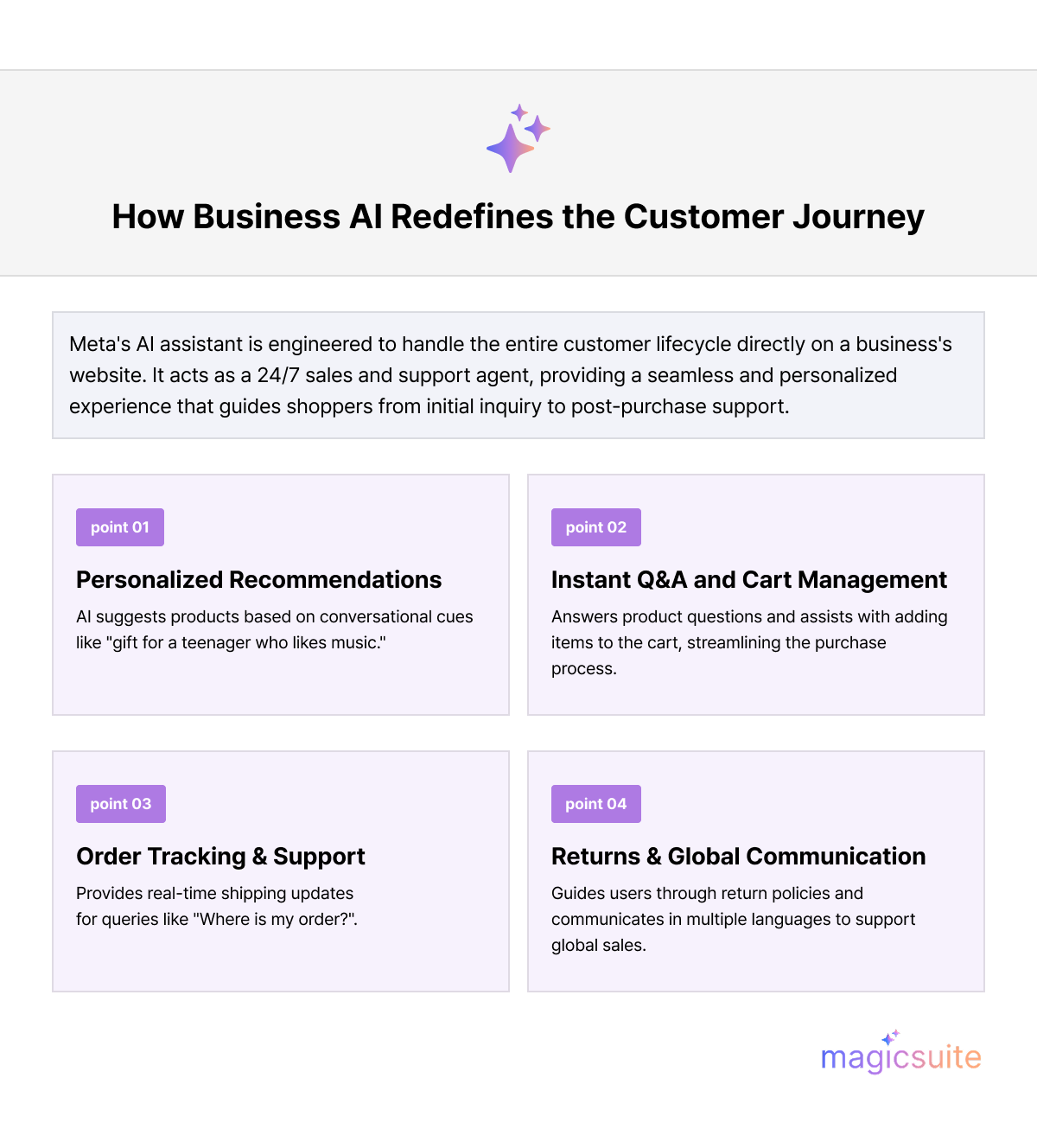Discover 10 practical ways to integrate AI into your daily workflow to automate tasks and boost productivity. Learn how AI tools can streamline everything from customer support to data analysis.

AI has moved from hype to habit. The fastest-growing teams aren’t replacing people, they’re removing bottlenecks. This guide outlines 10 practical ways to integrate AI into your daily workflow, from meetings and email to support, analytics, design, and research, along with starter tools, guardrails, and KPIs, enabling you to deliver value in days, not months.
What to do:
Teams typically save 15–25 minutes per meeting by eliminating manual note-taking and follow-up alignment. It also ensures absentees get a concise summary within minutes. Add a consent banner to meeting invitations, retain transcripts for no more than 90 days, and refrain from recording legal/HR-related meetings unless approved.
KPI:

Use tools like Jasper, Copy.ai, or ChatGPT to draft blog posts, emails, and social media copy. Provide AI with a detailed brief that includes tone of voice, target audience, and key messaging.AI tools help overcome creative blocks and drastically speed up the content creation process. With AI, you can draft high-quality pieces in a fraction of the time, cutting down your content production cycle.
Guardrails:
Always run a plagiarism check, fact-check the generated content, and match the tone with your brand guidelines.
KPI:
Leverage built-in AI features in Gmail, Outlook, or third-party apps like SaneBox or Superhuman to categorize emails, suggest responses, and summarize long threads. The average professional spends several hours a day on email. Automating simple tasks and summarizing threads can help you reach inbox zero faster and refocus on high-priority tasks.
Guardrails:
Ensure privacy by enabling two-factor authentication and avoiding the storage of sensitive information in AI systems unless it is encrypted.
KPI:
Start with a basic FAQ chatbot powered by NLP tools, such as MagicTalk. These bots can handle 80% of routine inquiries and pass complex issues to human agents with full chat histories. AI-powered chatbots offer instant, 24/7 support, enhancing customer satisfaction while alleviating the workload on your human agents.
Guardrails:
Set clear handoff rules to ensure seamless transitions to human agents, and track chatbot performance using CSAT and FCR metrics.
KPI:
Use AI tools like Power BI, Tableau, or DataRobot to process large datasets, identify patterns, and generate actionable insights. AI can predict trends, identify anomalies, and optimize strategies more efficiently than any human analyst, enabling businesses to make data-driven decisions with greater accuracy.
Guardrails:
Ensure data privacy and compliance with GDPR or relevant local laws. Always validate AI-driven insights with human oversight.
KPI:

Use AI in platforms like HubSpot or Marketo to personalize content, automate email sequences, and score leads based on engagement. AI-driven personalization enhances engagement rates and conversions by delivering highly relevant content to users, thereby increasing both ROI and customer satisfaction.
Guardrails:
Set up lead scoring thresholds and review email campaigns to avoid over-automation or irrelevant recommendations.
KPI:
Utilize AI scheduling tools like Reclaim.ai or Doodle’s AI Assistant to automate meeting scheduling, rescheduling, and resolving calendar conflicts. By eliminating the back-and-forth of scheduling, you can save hours of administrative time each week, allowing you to focus on high-priority tasks.
Guardrails:
Ensure privacy settings are configured correctly and review AI-suggested meeting times before finalizing.
KPI:
Implement AI-powered internal search tools like MagicSuite.ai to make company-wide information easily accessible through semantic search. AI search tools can interpret the meaning behind queries, making knowledge retrieval faster and more accurate, saving valuable time across teams.
Guardrails:
Regularly audit access control to ensure data security and avoid unauthorized sharing of sensitive information.
KPI:
Use AI-powered tools like Midjourney for image creation and Beautiful.ai for auto-formatting presentations, ensuring both are visually appealing. AI democratizes design, allowing anyone—even those without design experience—to create professional, engaging visuals in minutes.
Guardrails:
Review design elements for brand consistency and proper licensing for AI-generated images.
KPI:
Utilize AI tools like ChatGPT and Perplexity AI to gather data, summarize reports, and generate research insights based on simple prompts. AI accelerates the research phase, letting you focus on deep analysis and strategic decision-making.
Guardrails:
Verify AI-generated content with human oversight and ensure source material is properly cited.
KPI:
Set a review policy: human approves external-facing outputs, logs sources, and runs a plagiarism and fact-checking pass.
Track time saved per task, quality metrics (CSAT, acceptance rate), and revenue lift (SQLs, conversions).
Integrating AI into your workflow isn't about replacing people; it's about empowering them. Start small by adopting one or two of these methods, and you'll quickly discover how AI can become an indispensable partner in your quest for greater productivity and success.
Ready to see how AI can transform your business? Explore the power of intelligent customer support and streamline your operations instantly.
Discover MagicTalk: Your AI-Powered Chatbot Solution

Luke is a technical market researcher with a deep passion for analyzing emerging technologies and their market impact. With a keen eye for data and trends, Luke provides valuable insights that help shape strategic decisions and product innovations. His expertise lies in evaluating industry developments and uncovering key opportunities in the ever-evolving tech landscape.